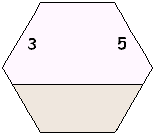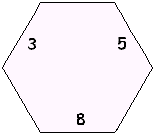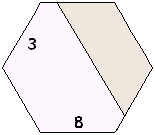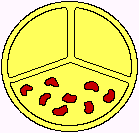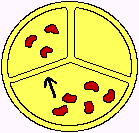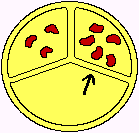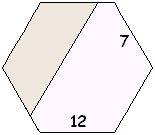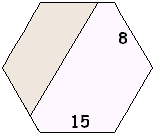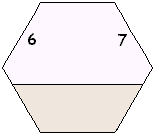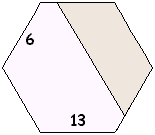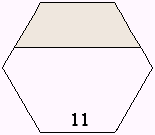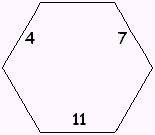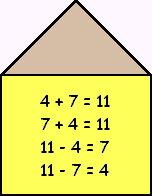 |

|
Games and Activities + - Fact Family Cards |
 + - card info |
 |
|
activities to build concepts games and activities to build speed |
| You can split your deck of fact family cards into two piles: facts you are learning and facts you know. Use the activities to build concepts to help you learn and picture new facts. Use the activities to build speed to get faster with the facts you already know.
* activities to build concepts
These activities will help you to picture each fact. Take as much time as you like with each fact family card.
* Snap Them Together... Pull Them Apart
* Draw the Family
Make a simple drawing of each fact in the fact family. Write the fact under each picture.
* Math on a Plate
* Make a Ladder
When subtracting from a number greater than 10, count up using a number ladder with 10 on the middle rung.
(Can you think of how you might climb down the ladder and find a difference of 5?)
* Number Line Math
Place the cards in the "house" so that one of the numbers is hidden. Several examples below show how to use the number line with different hidden numbers. You will need:
* Build On What You Know
Doubles + 1:
Flexible Fact Family:
Instead of subtracting a large number, count up from that number:
Start with Ten and adjust:
Use 10 as an Anchor as shown in the Number Line and Make a Ladder activities, above.
|
||||||||||||||||||||||||||||||||
| * activities to build speed These activities are meant to be used only after you have become very familiar with each card, using some of the ideas in the activities to build concepts section above. Shrinking Time Limit Hide Two 3-Minute Sort Four Facts in the Family * Shrinking Time Limit Ask a partner to time you as you answer each card. Agree on a time limit. You might start with 10 seconds per card. If you answer a card correctly within the time limit, set it aside and go on to the next card. If you cannot answer the card correctly within the time limit, take all the time you need to figure it out, using objects or an idea from the Build On What You Know section above. Then explain out loud how you solved the problem. Set these harder cards in a different pile as you answer each one. After you finish going through the stack, return to the pile of harder cards (which took you longer to answer). Repeat the steps above with the same time limit, seeing which harder cards you can now answer within the time limit, and taking as much time as you need to figure out the others and explain how you figured them out.
When you are able to go through the whole pile within your time limit, set a shorter time limit and repeat the steps above. Eventually your goal is to answer each card in 3 seconds or less!
* Hide Two
This game is partly skill and partly luck. But the better you know your facts, the faster you'll be able to say all of the possible pairs of hidden numbers, and you'll have a better chance of keeping your cards.
* 3-Minute Sort When the three minutes are up, count how many cards are in each pile. Now place the fact family house so that it covers a different portion of each card, and time yourself again. Can you get through more cards in the stack this time?
* Four Facts in the Family
| ||||||||||||||||||||||||||||||||
